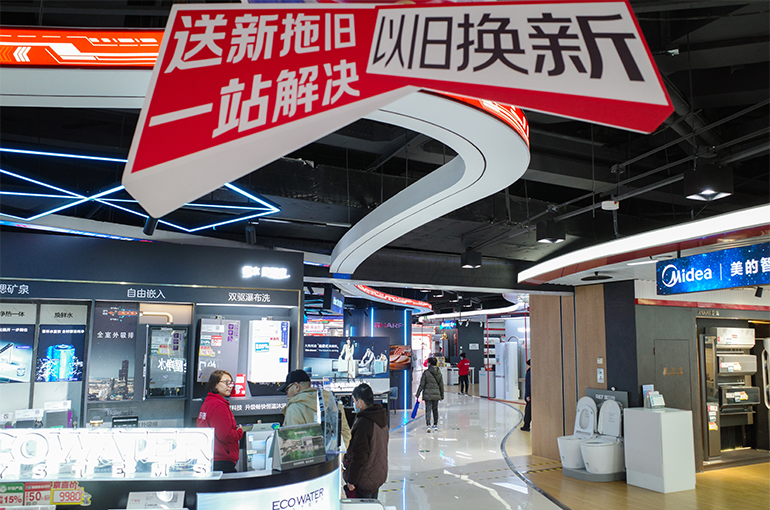 China’s Trade-In Policy Drives Home Appliance Sales to Record High in 2024
China’s Trade-In Policy Drives Home Appliance Sales to Record High in 2024(Yicai) Jan. 20 -- Retail sales of home appliances in China soared to a new record last year, mainly because of a government initiative to encourage consumers to replace old electrical goods with new ones.
Home appliance sales jumped more than 12 percent to CNY1.03 trillion (USD143.3 billion) in 2024, exceeding CNY1 trillion for the first time ever, according to the National Bureau of Statistics.
The government introduced trade-in subsidies for certain consumer goods last March. Earlier this month the number of eligible categories was raised from eight to 12, with the addition of dishwashers, microwave ovens, rice cookers, and water purifiers. The policy is a key initiative to stimulate consumer spending, support domestic manufacturing, and promote energy efficiency.
More than 37 million consumers have benefited from the policy so far, according to the Ministry of Commerce. They bought more than 62 million home appliances through it last year, directly boosting consumption by nearly CNY270 billion (USD36.9 billion), the ministry’s data also showed.
Retail sales of household appliances and audio-visual equipment soared 21 percent in September, 39 percent in October, 22 percent in November, and 39 percent in the December, achieving double-digit growth in the last four months of last year, according to the ministry.
The trade-in program encourages the replacement of high-energy-consumption products with more energy-efficient ones. Over 90 percent of the home appliances sold under the scheme had the highest energy efficiency level.
According to estimates from the National Energy Conservation Center, swapping out older items for more energy efficient replacements likely saved over 10 billion kilowatt-hours of electricity last year.
Exports of Chinese household appliances are also on the rise. In the first 11 months of last year, China exported 4.1 billion items, up 21 percent from a year earlier, according to official data. Among them, exports of air conditioners, refrigerators, washing machines, and televisions rose 28 percent, 21 percent, 14 percent, and 11 percent, respectively.
Editor: Futura Costaglione